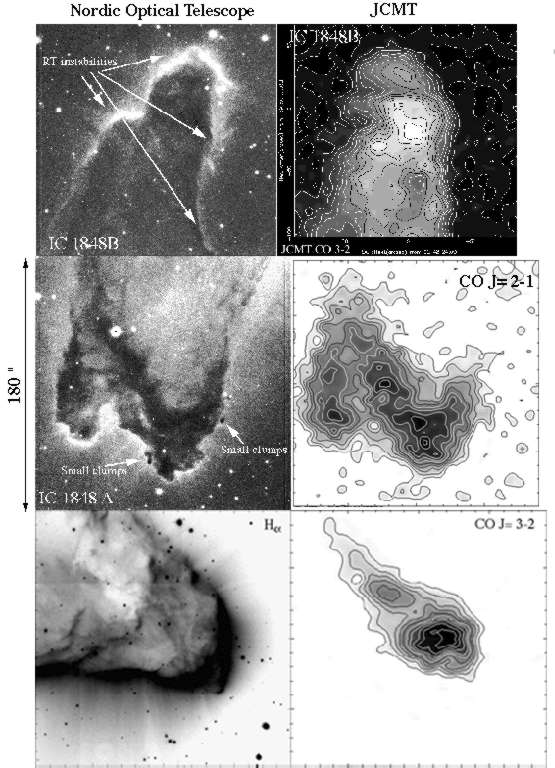|
||||
|
Dynamical collapse modelling of induced star formation We have been carrying out simulations on the process of triggered star formation, where an external shock is able to induce the collapse of material inside a molecular cloud. Examples of this are bright rim nebulae, which are ionised by external radiation sources. The hot ionised gas at the surface leads to a shock propagating into the gas, and initiating protostellar collapse.
We have completed a survey of bright rimmed nebulae and HII regions, using narrow-band optical imaging, near-IR / submm wavelength spectral line, SCUBA continuum mapping and ISOCAM CVF maps covering all the major atomic emission lines within the CVF wavelength coverage. We will use this very complete set of observational data, along with the high velocity resolution data available from the optical and submm spectroscopy, to measure the gas properties and excitation at the neutral / atomic gas boundary layer.
JCMT and Nordic Optical Telescope observations of neutral / photoionised gas at the edges of cometary globules Small low-mass cometary globules and bright-rim clouds are ideal for this study (see Figure above). Their dynamics, photochemistry and morphologies are strongly influenced by the surrounding ultraviolet field, which can trigger or induce star formation. Unusually, by comparison with molecular cloud cores, rather detailed theoretical models of their structure and physics have been formulated. We have found [33] models to be very successful in interpreting the few observations made of this class of objects. Our objectives for this grant are: a) to study the structure / physics of the molecular cores and their protostellar content, and b) to understand the conditions in the ionised/molecular skin where the photoionised boundary layer starts, and its role in inducing star formation in the core of the cloud. We have already obtained JCMT data to measure the column densities, masses, thermal and velocity structures, and optical CCD imaging and high resolution echelle spectroscopy from the Nordic Optical Telescope with resolutions ~ 0.3". For a number of the objects we also have ISOCAM CVF data (3'x3' areas from 2 - 15 mm at ~ 3" resolution). We thus have a full set of spectral lines covering the main optical, infrared and submm lines, sampling the whole energy budget and the velocity fields of the molecular/ionised gas interface. We are therefore in an unique position to model this process. |
|
|


